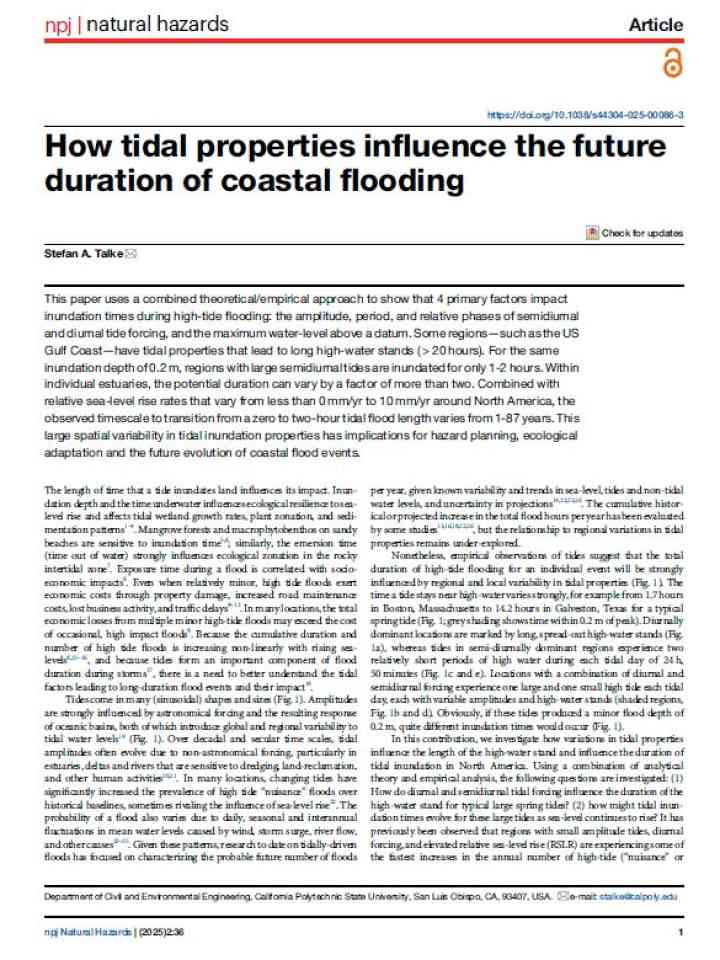How tidal properties influence the future duration of coastal flooding
This paper uses a combined theoretical/empirical approach to show that 4 primary factors impact inundation times during high-tide flooding: the amplitude, period, and relative phases of semidiurnal and diurnal tide forcing, and the maximum water-level above a datum. Some regions—such as the US Gulf Coast—have tidal properties that lead to long high-water stands ( > 20 hours). For the same inundation depth of 0.2 m, regions with large semidiurnal tides are inundated for only 1-2 hours.
Within individual estuaries, the potential duration can vary by a factor of more than two. Combined with relative sea-level rise rates that vary from less than 0 mm/yr to 10 mm/yr around North America, the observed timescale to transition from a zero to two-hour tidal flood length varies from 1-87 years. This large spatial variability in tidal inundation properties has implications for hazard planning, ecological adaptation and the future evolution of coastal flood events.
Explore further
